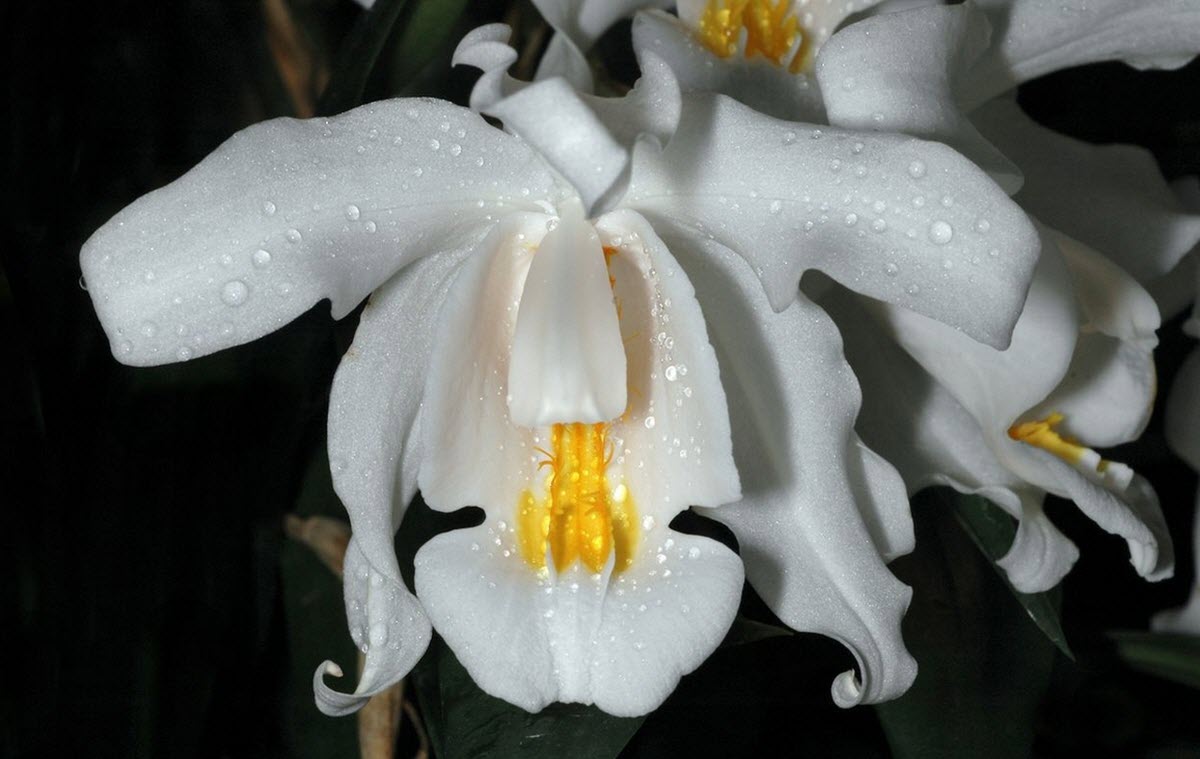Coelogyne cristata
Contents
Name: Coelogyne cristata

Coelogyne cristata – Picture by Eric
General information
Coelogyne cristata is native to Asia where its habitat extends from the Garhwal region of northern India, through Nepal, Sikkim, Assam, Buhtan, and into the Indian Khasi Hills. You can also find this orchid species growing in the mountains in the northernmost regions of Thailand. The typical Coelogyne cristata habitat is found at an elevation of 1600-2600 m (roughly 5250-8500 ft).
Flowers
Coelogyne cristata is one of the largest flowered members of the genus Coelogyne. 5-8 showy flowers open up simultaneously on each inflorescence and the blooming period can be very long. A flower can last up to five weeks if provided with the right conditions. Each flower is 7-13 cm (3-5 in) across and of a snow white color. The margins are wavy with reflexed tops and the texture is crystalline. The lip of the flower is very beautiful; it is decorated with golden blotches and up to 5 yellow keels.
Light
Coelogyne cristata is commonly found growing fully exposed to the sun on both trees and rocks in moss-forests.
Temperature
Coelogyne cristata is a cool growing orchid. The recommended temperature for winter days is 11-13°C (51-55°F), and it is normal for the orchid to experience a temperature around 2-4°C (36-39°F) during winter nights. In its native environment, summer days average 21-24°C (69-75°F) and the night temperature normally drops down to 14-15°C (58-59°F).
Resting
A cool, dry resting period is recommended. Reduce watering for 2-3 months during the winter, and stop using fertilizer.
Watering and humidity
Coelogyne cristata appreciates a humidity around 85% in the summer and 60-70% during early winter. Late winter and early spring should ideally be even dryer. Coelogyne cristata will appreciate being misted year round, since its natural mountainous habitat is foggy. During periods when your orchid is growing actively it will need a lot of water, and little if any drying is recommended between waterings.
Potting medium
Coelogyne cristata can be mounted on slabs of cork och fern, but some growers prefer pots filled with a fast draining medium since this makes it easier to keep the orchid moist enough during dry and warm periods of the year. You can for instance use medium sized fir bark or tree-fern and mix it up with chopped sphagnum muss and charcoal.
A slow-drying medium should never be used. The potting medium should be leached every few weeks to remove salt buildup during periods when you provide your orchid with plenty of fertilizer.
Repotting
Coelogyne cristata should be replanted when it outgrows its pot or when the potting medium stops draining well, develops a foul smell or turns bad in any other way. This is not an orchid species that likes to be disturbed and repotting should only be considered when absolutely necessary. It can take several years for a Coelogyne cristata to regain its strength.